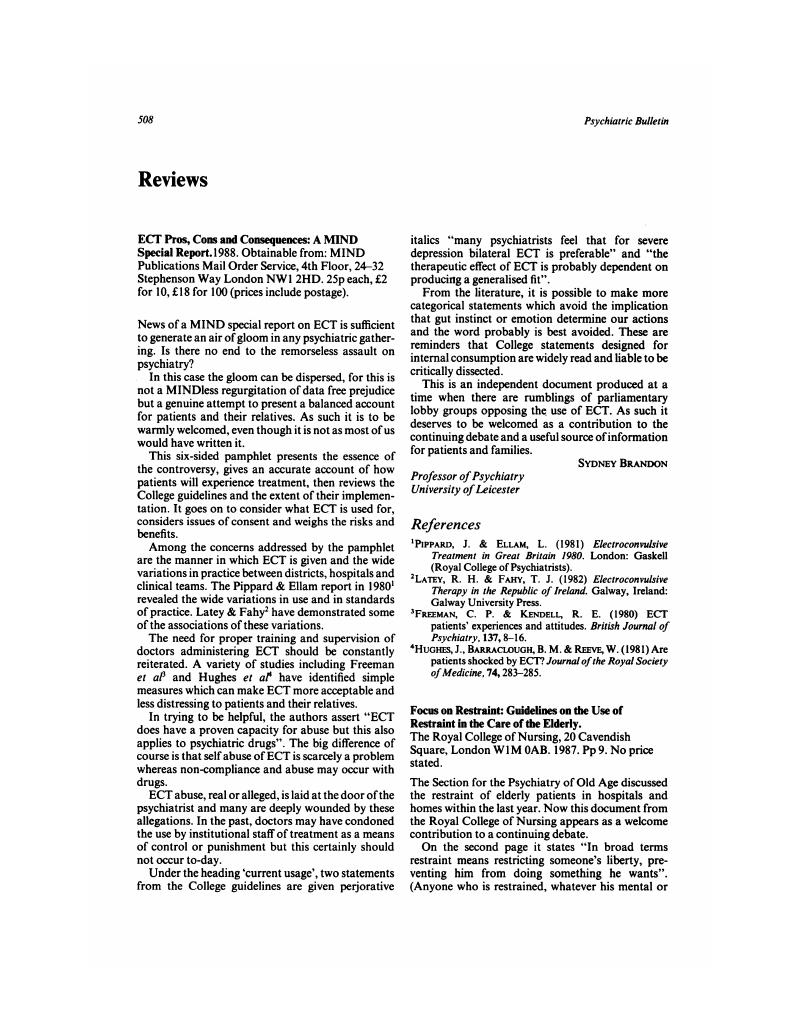No CrossRef data available.
Article contents
ECT Pros, Cons and Consequences: A MIND Special Report. 1988. Obtainable from: MIND Publications Mail Order Service, 4th Floor, 24–32 Stephenson Way London NW1 2HD. 25p each, £2 for 10, £18 for 100 (prices include postage).
Published online by Cambridge University Press: 02 January 2018
Abstract
An abstract is not available for this content so a preview has been provided. As you have access to this content, a full PDF is available via the ‘Save PDF’ action button.

- Type
- Reviews
- Information
- Creative Commons
- This is an Open Access article, distributed under the terms of the Creative Commons Attribution (CC-BY) license (http://creativecommons.org/licenses/by/4.0/), which permits unrestricted re-use, distribution, and reproduction in any medium, provided the original work is properly cited.
- Copyright
- Copyright © Royal College of Psychiatrists, 1988
References
1.
Pippard, J. & Ellam, L. (1981) Electroconvulsive Treatment in Great Britain 1980.
London: Gaskell (Royal College of Psychiatrists).Google Scholar
2.
Latey, R. H. & Fahy, T. J. (1982) Electroconvulsive Therapy in the Republic of Ireland.
Galway, Ireland: Galway University Press.Google Scholar
3.
Freeman, C. P. & Kendell, R. E. (1980) ECT patients' experiences and attitudes. British Journal of Psychiatry, 137, 8–16.Google Scholar
4.
Hughes, J., Barraclough, B. M. & Reeve, W. (1981) Are patients shocked by ECT?
Journal of the Royal Society of Medicine, 74, 283–285.Google Scholar





eLetters
No eLetters have been published for this article.